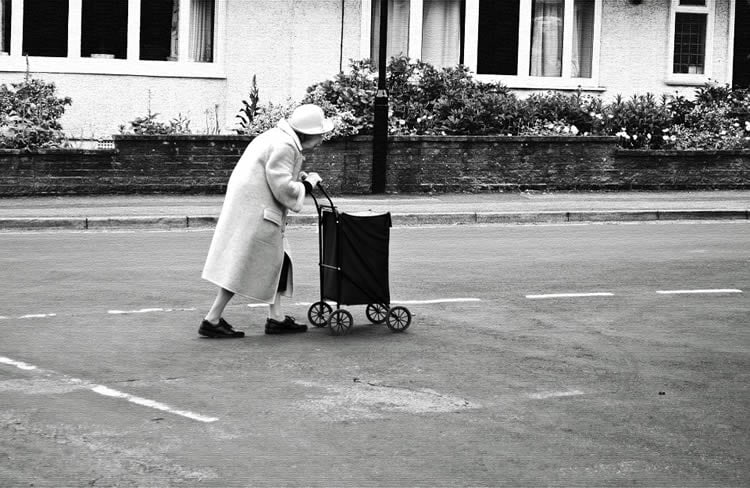USC researchers also found indications that American men appear to have made some improvements in health but women have not.
Americans are living longer but in poorer health, according to a new study.
The USC-led study, published online Thursday in the American Journal of Public Health, examined life expectancy trends and disability rates in a 40-year period, from 1970 to 2010. The analysis of U.S. vital statistics showed that the average total lifespan increased for men and women in those 40 years, but so did the proportion of time spent living with a disability.
The study found increased longevity is not necessarily indicative of good health. Most age groups live longer with a disability or other health problem.
“We could be increasing the length of poor quality life more than good-quality life,” lead author Eileen Crimmins, USC University Professor and AARP Professor of Gerontology at the USC Davis School of Gerontology. “There are a number of indications that the Baby Boomer generation that is now reaching old age is not seeing improvements in health similar to the older groups that went before them.”
Only for people aged 65 and older was there a “compression of morbidity” – a reduction in the proportion of years spent with disability.
The findings have significant implications for policymaking, such as proposals to raise the retirement age for Social Security and Medicare eligibility.
“Clearly, there is a need to maintain health and reduce disability at younger ages to have meaningful compression of morbidity across the age range,” Crimmins said. “The trends for the last 40 years do not support projections and policies that are based on assumptions of a reduced length of disabled life.”
Findings
The average lifespan for men increased by 9.2 years to 76.2 years, the researchers found. The number of years they live with a disability increased by 4.7 years while the number of years spent disability-free increased by 4.5 years.
For women, the average lifespan increased by 6.4 years to 81 years. The number of years that women spend with a disability increased by 3.6 years, exceeding the increase in women’s disability-free life (2.7 years).

“The smaller increase in healthy life than in total life for women was surprising and another indication that American women have not done as well as American men in terms of improving health in recent decades,” Crimmins said.
Different factors may affect disability at different ages, the researchers wrote. For instance, younger populations may have had an increase in disability because of a greater emphasis on mental health, increased diagnoses of autism spectrum and attention-deficit hyperactivity disorders, and changes in drug use.
Study co-authors were Yuan Zhang of USC Davis School of Gerontology and of Yasuhiko Saito, a USC graduate now of Nihon University.
Funding: The study was supported by a grant from the National Institute on Aging (P30-AG17265) and a special research grant from the Japan Ministry of Health, Labor and Welfare (H26-Tokubetsu-Shitei-029).
NeuroscienceNews.com would like to thank Emily Gersema for submitting this research news directly to us.
Source: Emily Gersema – USC
Image Credit: The image is in the public domain.
Original Research: Abstract for “Trends Over 4 Decades in Disability-Free Life Expectancy in the United States” by Eileen M. Crimmins, Yuan Zhang, and Yasuhiko Saito in American Journal of Public Health. Published online April 14 2016 doi:10.2105/AJPH.2016.303120
Abstract
Trends Over 4 Decades in Disability-Free Life Expectancy in the United States
Objectives. To examine changes over 40 years (1970–2010) in life expectancy, life expectancy with disability, and disability-free life expectancy for American men and women of all ages.
Methods. We used mortality rates from US Vital Statistics and data on disability prevalence in the community-dwelling population from the National Health Interview Survey; for the institutional population, we computed disability prevalence from the US Census. We used the Sullivan method to estimate disabled and disability-free life expectancy for 1970, 1980, 1990, 2000, and 2010.
Results. Over the 40 years, there was a steady increase in both disability-free life expectancy and disabled life expectancy. At birth, increases in disabled life and nondisabled life were equal for men (4.5 years); for women, at birth the increase in life with disability (3.6 years) exceeded the increase in life free of disability (2.7 years). At age 65 years, the increase in disability-free life was greater than the increase in disabled life.
Conclusions. Across the life cycle, there was no compression of morbidity, but at age 65 years some compression occurred.
“Trends Over 4 Decades in Disability-Free Life Expectancy in the United States” by Eileen M. Crimmins, Yuan Zhang, and Yasuhiko Saito in American Journal of Public Health. Published online April 14 2016 doi:10.2105/AJPH.2016.303120






